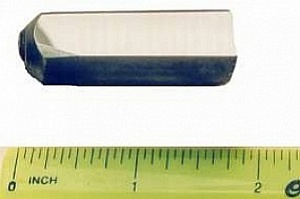Scientists at the Laboratory for Radiophysical and Optical Methods of Environmental Research are working on a state task on the identification of internal defects in synthetic crystals required for laser devices for medical and defense purposes. They are developing a way to identify defects that cannot be detected by existing methods.
Some surface and internal defects can be formed in the production of synthetic crystals. The surface scratches, roughness, and chips can be eliminated by professionally treating the surface. Internal defects cannot be eliminated technologically, while, if the crystal is not transparent, they are difficult to detect.
- The presence of internal defects in the crystal is the determining factor in its suitability for use, - says Victor Dyomin, head of the laboratory and TSU Vice-Rector for Academic Affairs. - For example, if the crystal is used as a laser medium, these defects at higher pump energies could lead to its degradation and destruction.
Traditionally, quality control of such crystals is produced using radial tests in which the samples that have defects are destroyed. However, TSU scientists note that some defective crystals withstand this test. The internal defect becomes a potential centre of the destruction, and the crystal can then quickly be damaged during operation.
Tomsk State University scientists propose detecting internal defects in crystals using non-destructive techniques based on digital holography and use of terahertz radiation. They plan to establish a joint methodology for the application of these methods.
- There are some reasons to assume that the spectral properties of the defective crystals have particular properties in the terahertz range. Therefore, we hope that by examining the properties of the crystal, we can draw conclusions about the presence of defects in it - explains Victor Dyomin.
Scientists are deveoping the new technology for detecting hidden defects for the ZnGeP2 crystal (a compound of zinc, germanium, and phosphorus), which is produced by an industrial partner of the project, the Tomsk company Laboratory of Optical Crystals. ZnGeP2 crystals are produced in Tomsk and in several countries abroad and are used to produce laser light of rare spectral bands, making it possible to create lasers with unique properties useful for non-invasive medicine, defense, and other purposes. The new quality control method can be applied to other synthetic crystals.

